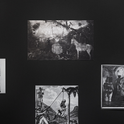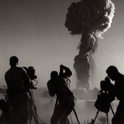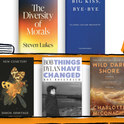The Money Game (1968) By Adam Smith
Adam Smith is a pseudonym: this book was penned by a successful professional investor called George Goodman, who is also a broadcaster and author. This is a real insider’s account of the way money markets and trading work. The most helpful way of understanding markets is as a sort of a game: taken deadly seriously but contentless, in the way that games are. Goodman mentions Keynes’s observation that investment is intolerably boring to anyone who lacks a gambling trait in their character. It’s very funny, very fluent, very well-written and a real professional’s view. It tells you that the professionals are conflicted and confused in ways that pretty exactly mirror the way that the rest of us are. The bankers and traders have more tools, but ultimately they have the same underlying complexities and ambiguities and ambivalences.
Liar’s Poker (1990) By Michael Lewis
Despite being 20 years old, this is still a wonderfully entertaining book: an absolutely hilarious, very, very dark, vivid account of how Michael Lewis came out of Princeton and, with basically no qualifications, got a job in the bond trading department of Salomon Brothers. This was in the early 1980s, just at the point where the bond market really started to take off. Traders had free rein to invent a host of new financial gimmicks, and Lewis came to know some of the people who wrote the credit default swaps (CDS) that ended up taking the financial system over the edge of a cliff. But the big thing about Liar’s Poker is that it’s still one of the very few books that describes the psychology of that world from the inside. Lewis was actually one of them, and it feels genuinely important to hear what these guys are thinking and how they’re reacting.
Against the Gods (1998) By Peter L Bernstein
This is a fascinating, for-the-layman account of how humanity mastered risk (in the mathematical sense) and came to understand probability. Bernstein makes the point that, particularly in the middle ages, betting on dice was seen as a grievous sin by the church-. Since God decided everything, including whether it would come up six or one, it was a form of blasphemy to frivolously play with what he wanted. But then gamblers got interested in the fact that certain numbers came up more often than others, and suddenly you had gambling and mathematics going hand in hand. Effectively, then, the discovery of probability came out of studying dice. Bernstein convinces you that this is some kind of humanist project, an attempt to put into the realm of understanding things that were previously seen as utterly capricious.
Frozen Desire: An Inquiry into the Meaning of Money (1997) By James Buchan This is a profound book about our relationship with money, which is one of humanity’s most extraordinary inventions. Money is so useful—it frees us in so many ways, but at the same time it enslaves us. Buchan gets its extraordinary nature—the way it takes over our lives and acts as a kind of solvent, dissolving difference, place, art, craft, and history, until everything else stops mattering. One thing that comes through is Buchan’s ambivalence about whether money is a good thing or not. Lots of writers come down entirely on one side or the other, but Frozen Desire is unique in being balanced. If you’re interested in how the world works, why things are as they are and what the story is behind the thing you see, you always end up being interested in how money works. It is, in a sense, the secret order of things. Too Big to Fail (2009) By Andrew Sorkin This is purely a narrative: a minute-by-minute account of how the whole financial system nearly went over the brink in 2008, and the amazing sense of tension and danger involved. It starts with Bear Stearns in trouble and then just charges along. I thought it would take ten years before anything like this came out. It shows the behind-the-scenes deliberation: why Lehman’s was allowed to fail—which was what precipitated the crisis—and why they did the bailout in the way they did. Andrew Sorkin covers the markets for the New York Times, and he’s a real insider. The book makes no judgments, which I suppose is why he has such good access. There’s a scary sense sometimes that there’s no adult supervision—Sorkin leaves you under no illusion that it’s people like us making these astonishingly consequential minute-by-minute decisions.
Frozen Desire: An Inquiry into the Meaning of Money (1997) By James Buchan This is a profound book about our relationship with money, which is one of humanity’s most extraordinary inventions. Money is so useful—it frees us in so many ways, but at the same time it enslaves us. Buchan gets its extraordinary nature—the way it takes over our lives and acts as a kind of solvent, dissolving difference, place, art, craft, and history, until everything else stops mattering. One thing that comes through is Buchan’s ambivalence about whether money is a good thing or not. Lots of writers come down entirely on one side or the other, but Frozen Desire is unique in being balanced. If you’re interested in how the world works, why things are as they are and what the story is behind the thing you see, you always end up being interested in how money works. It is, in a sense, the secret order of things. Too Big to Fail (2009) By Andrew Sorkin This is purely a narrative: a minute-by-minute account of how the whole financial system nearly went over the brink in 2008, and the amazing sense of tension and danger involved. It starts with Bear Stearns in trouble and then just charges along. I thought it would take ten years before anything like this came out. It shows the behind-the-scenes deliberation: why Lehman’s was allowed to fail—which was what precipitated the crisis—and why they did the bailout in the way they did. Andrew Sorkin covers the markets for the New York Times, and he’s a real insider. The book makes no judgments, which I suppose is why he has such good access. There’s a scary sense sometimes that there’s no adult supervision—Sorkin leaves you under no illusion that it’s people like us making these astonishingly consequential minute-by-minute decisions.











